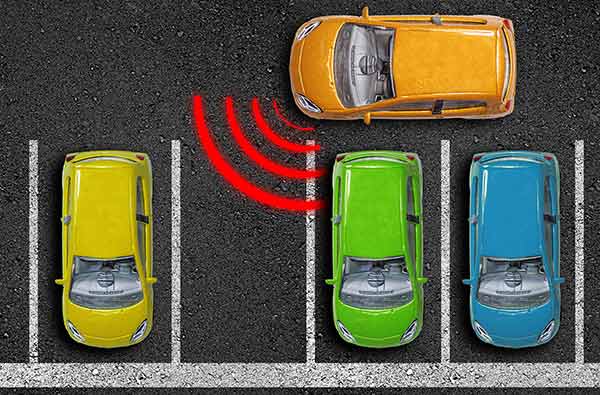As new car safety features start becoming the standards for all new cars, which ones specifically help prevent car accidents? Advanced Driver-Assistance Systems are features that are used to increase safety when driving. ADAS features include backup cameras, adaptive cruise control, collision warning systems, blind-spot monitoring systems, lane departure warning, traction control, and many more.
Most drivers don’t really know what these safety features do for them and how they help prevent accidents. We will explain these crash avoidance technologies. The National Highway Traffic Safety Administration believes having at least collision warning systems, automatic emergency braking, backup cameras, blind-spot monitoring, and lane assisting are most important for preventing car accidents.
Collision Warning Systems & Backup Cameras
Forward collision warning systems by using either radar, lasers, or cameras to detect vehicles in front. Forward collision warning systems by themselves reduce crashes by 27%, but when paired with automatic braking it reduces accidents by 56%. Certain types of forward-collisions warning systems work only at slower speeds while others work at both slow and higher speeds. Some systems can even detect pedestrians, bicyclists, and large animals.
Rear collision warning works similarly. Backup cameras pair well with rear collision warning systems. Backup cameras alert the driver by beeping when they get too close to an object. Many backup cameras have guiding lines to show how far away the driver is from an object. Rear collision warning systems are can be paired with automatic braking.
With both of these types of warning systems, you cannot be totally reliant on them. You need to stay alert while you are behind the wheel. The warning systems are only supposed to aid in safe driving efforts. When you are backing up or driving forward you should be cautious of the amount of space you have and of other objects that could be in the way.
Blind-Spot Monitoring Systems & Lane Assist
Blind-spot monitoring systems use sets of sensors that are on the bumper or on the side mirrors. The detection of other vehicles in the blind spots of the car will be shown by a light-up sensor on the side mirror. This blind-spot monitoring will help drivers when switching lanes. Another form of blind-spot detection is when drivers go to switch lanes, their blinker will trigger a blind-spot camera to appear on the side mirrors. This safety feature reduces the chance of an accident by 14%.
Lane assist or lane departure warning pairs with blind-spot monitoring. Lane departure warning notifies the driver when they start to drift out of the lane. This type of warning uses beeps to alert the drivers. Lane departure or lane assist work by scanning the road to detect the lane markers. If there are no lane markers, it will be difficult for the senses to detect lanes on dirt roads for example.
Lane assist helps cars steer themselves within the lane to avoid drifting. But drivers should not rely on these safety features. It is safer to always double-check before changing lanes to reduce car accidents better. Using your blinker to alert other drivers on the road about your next driving maneuver is also important to do.
Should You Look For a Car With New Car Safety Features?
New car safety features like the ones discussed, help protect drivers from crashes. Drivers for rideshare services like Uber and Lyft are encouraged to drive vehicles with ADAS. However, cars with these safety features are typically more expensive and drivers might opt for a used car because of the expense.
It is important to keep in mind that vehicles equipped with safety systems are essentially an investment. The new car safety features will be able to reduce the chances of being involved in an accident and reduce the amount of property damage and injuries possible after a crash. Many drivers should think of these new car safety features as an extra policy for their safety while driving.
As mentioned previously, many new cars are carrying these new safety features as the standard. These new car safety features can really help new drivers when they are out on the road. Though, they should be taught not to rely on them as they aren’t always 100% reliable, especially with the rise in popularity of self-driving vehicles. To reduce the number of car accidents that occur, drivers should always be aware of their surroundings and practice safe driving techniques.
According to World Economic Forum, from 1960 up until 2019, the number of fatalities for every 100 million miles driven has dropped from 5.2 to 1.1 which is a huge dip! This can be attributed to the advancement within car manufacturers developing new car safety features that keep drivers safe.

